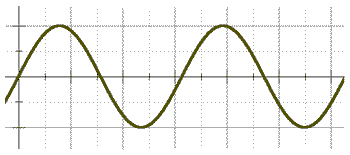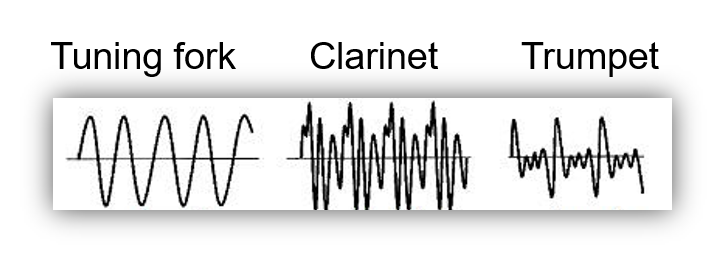Although we learned in school that sound is a wave, this wave is not as cute (sinusoidal) as it appears in books:

Each sound wave has a characteristic shape, which depends on the material that produced the sound. This is what defines the timbre of the sound.
Timbre (tone color or tone quality) is what differentiates two sounds of the same frequency (same note). For example, the C note played on the guitar sounds very different from the C note played on the piano or flute. This means that these instruments have different timbres.
See some examples of waveforms produced by different instruments below:
The more practice and experience a musician develops, the more refined his ear will be in order to distinguish the peculiar timbre of each instrument.
For example, two guitars of the same model and the same manufacturer may have different timbres. This is because manufacturing is not exactly the same for all instruments on an assembly line. Just a millimeter of difference in the placement or fitting of a piece already changes the timbre of an acoustic instrument and, many times, these details go unnoticed by most musicians.
Note: in electronic instruments, the differences in timbre are due to the manufacture of speakers, cables, logic gates and other items that make up the circuits of these instruments.
The more developed your ear is, the better your choice will be when buying an instrument, as you will be able to notice the difference and peculiar characteristic of each model, type, manufacturer, etc.
If you want to train your ear to be sensitive to different timbres, try playing similar instruments, making some changes like changing the strings (on string instruments), etc. to analyze the different sounds.
Go to: Sharp and Flat
Back to: Module 1
